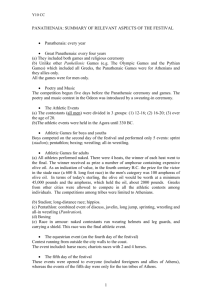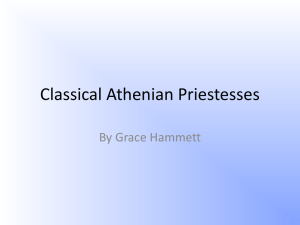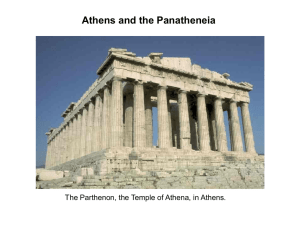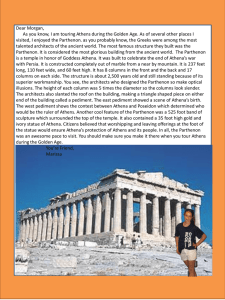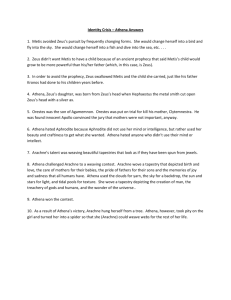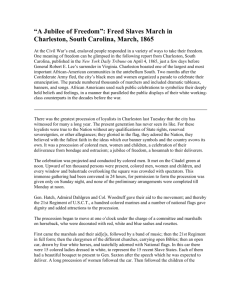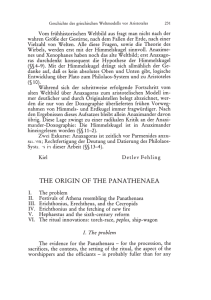Role in the Panathenaic Procession
advertisement
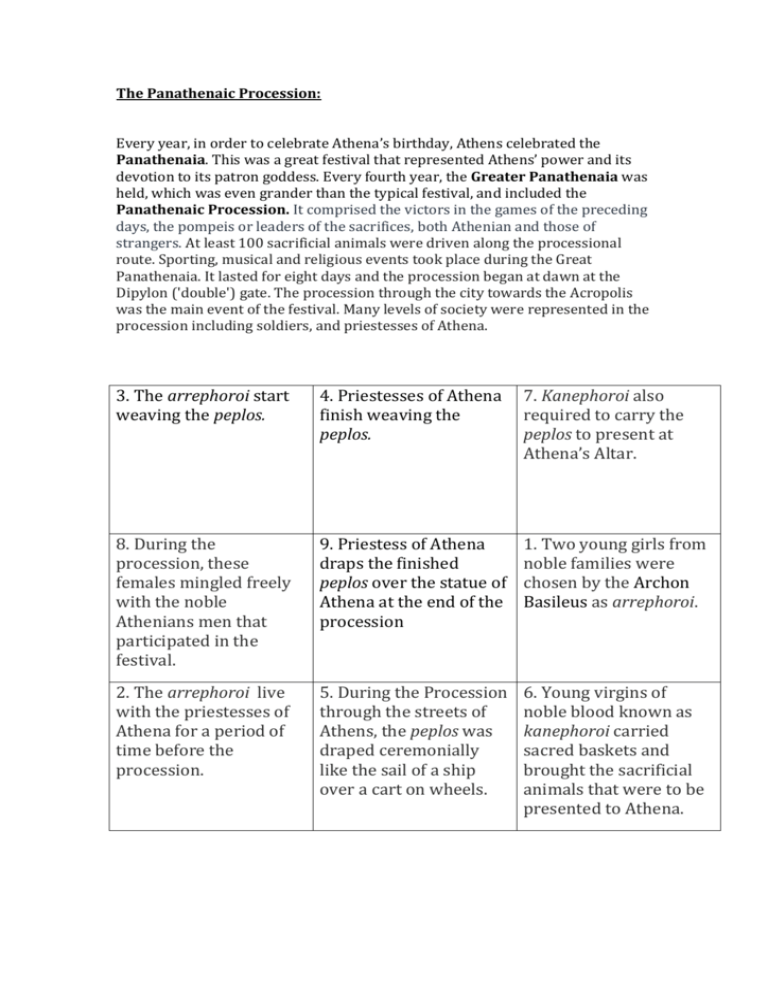
The Panathenaic Procession:
Every year, in order to celebrate Athena’s birthday, Athens celebrated the
Panathenaia. This was a great festival that represented Athens’ power and its
devotion to its patron goddess. Every fourth year, the Greater Panathenaia was
held, which was even grander than the typical festival, and included the
Panathenaic Procession. It comprised the victors in the games of the preceding
days, the pompeis or leaders of the sacrifices, both Athenian and those of
strangers. At least 100 sacrificial animals were driven along the processional
route. Sporting, musical and religious events took place during the Great
Panathenaia. It lasted for eight days and the procession began at dawn at the
Dipylon ('double') gate. The procession through the city towards the Acropolis
was the main event of the festival. Many levels of society were represented in the
procession including soldiers, and priestesses of Athena.
3. The arrephoroi start
weaving the peplos.
4. Priestesses of Athena
finish weaving the
peplos.
7. Kanephoroi also
required to carry the
peplos to present at
Athena’s Altar.
8. During the
procession, these
females mingled freely
with the noble
Athenians men that
participated in the
festival.
9. Priestess of Athena
draps the finished
peplos over the statue of
Athena at the end of the
procession
1. Two young girls from
noble families were
chosen by the Archon
Basileus as arrephoroi.
2. The arrephoroi live
with the priestesses of
Athena for a period of
time before the
procession.
5. During the Procession
through the streets of
Athens, the peplos was
draped ceremonially
like the sail of a ship
over a cart on wheels.
6. Young virgins of
noble blood known as
kanephoroi carried
sacred baskets and
brought the sacrificial
animals that were to be
presented to Athena.
